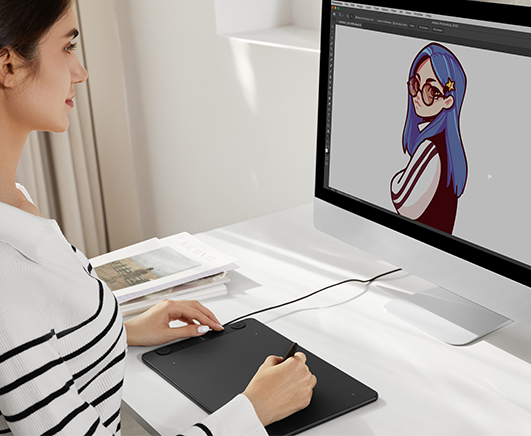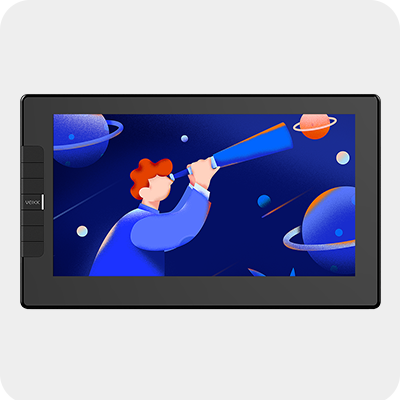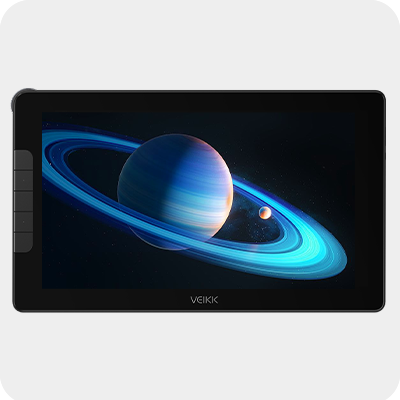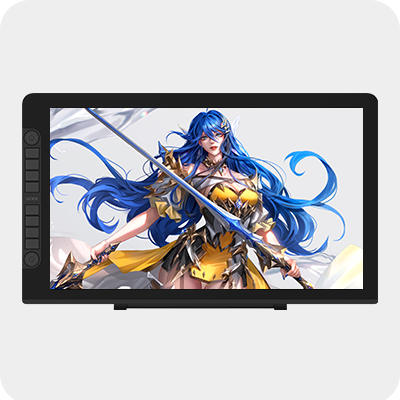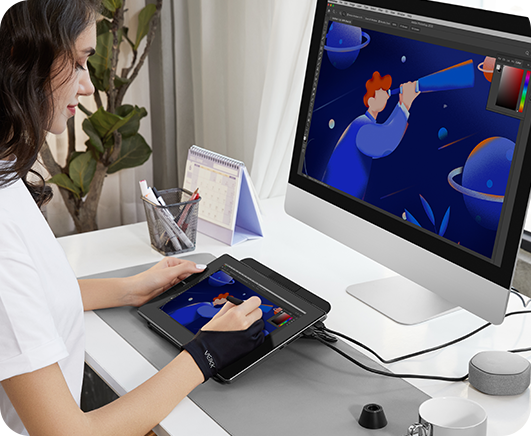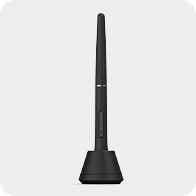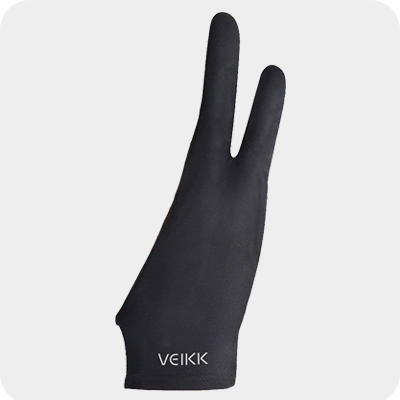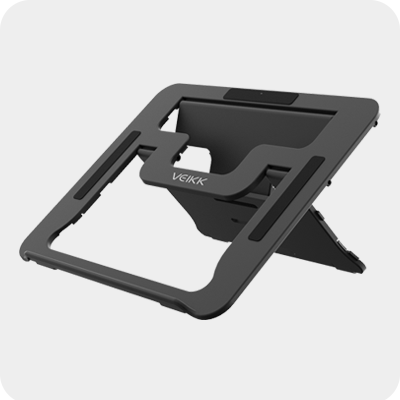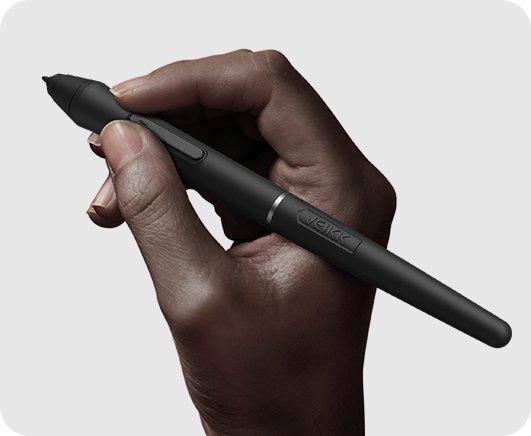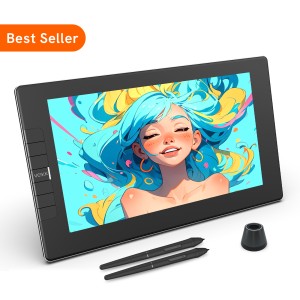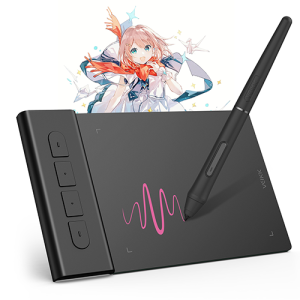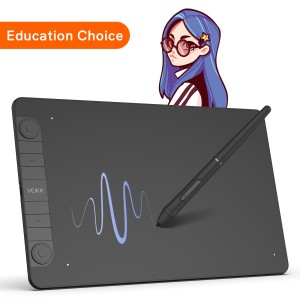Need the best drawing tablet for photo editing but for an affordable price? Will you use the tablet for Gimp or other photo editing programs?
Photo editing & retouching is a habit that all photographers have in order to offer a bright image that is much more pleasing to the eye than the original one.
As anyone who has ever tried to draw, edit photos, or even sign their names on a computer knows, the humble mouse is not the best tool for the job. Because drawing/photo editing with a mouse or touchpad isn't a pleasant experience at all and it takes ages.
If you're just starting to learn how to edit images, this will be a great addition to help you step up your game. You'll likely find it more natural, precise and fast than using a mouse or touchpad, and will allow you to obtain a refined and delicate result for your retouching.
Graphics tablets have long been considered professional tools for illustrators, artists, photographers and designers who need an intuitive, almost classic input device for their creativity.
These tablets are often far more sensitive than anything a mouse or trackpad can offer, with the best models offering high accuracy, tilt recognition, and thousands of distinct levels of pressure, which can be incredibly important for graphic design, typography, and photo retouching.
It is crazy to think that even just a few years ago, the choice of tablet you worked on was pretty limited to only one or two brands since so few were making them. Today, there is a much larger pool of tools to choose from ranging from incredibly budget friendly for beginners, to wildly expensive and insanely powerful for the working professional.
Is Gimp Compatible with Drawing Tablets?

Yes, Gimp does support graphic tablets and maps pressure, stroke speed, and other events to its advanced brush engine properties.
But you need to understand that what matters is not the drawing tablet itself, but the operating system it has to interact with. GIMP was made available to the Windows, Mac and Linux platform.
There are certain tablets that only support a specific operating system, for example, iPad Pro only works for iOS and the Samsung Galaxy tab only supports Android OS. So Gimp is not available for iPad OS Devices, Samsung Galaxy and other Android OS tablets.
Luckily, most of the drawing tablets work for Linux/Ubuntu, Apple Mac and Windows PC, so you can use the drawing tablet for different devices that you haveCan GIMP be used professionally for photo editing?
Whenever anyone asks for a free alternative to Adobe Photoshop, GIMP (the GNU Image Manipulation Program) is always the first program that people talk about. Gimp launched at the very start of 1996, it's one of the oldest open-source image editors still under active development, and it's still free and open source today. You can download GIMP for Windows, Mac or UNIX systems at its official site.
GIMP is an amazing piece of software that comes with a huge array of professional-quality functions, with it you can do almost anything you want to an image, from photo retouching to creating photorealistic collages.
GIMP's excellent brush-based editing tools can also be used for digital drawing, and ever since version 2.10, GIMP has been bundled with the impressive MyPaint library for more realistic paint effects.
GIMP has always been open-source software, which means that anyone can download the source code to see how it works, This means that anyone with a mind to can tinker with it to customise the way it works.
The ability to completely customize the user interface can make a huge difference in ease of use, but it all depends on the type of projects you use GIMP for.
Editing pixels is its primary job, so the tools need to be capable, adjustable, and responsive. From the clone/healing brush to the burn/dodge tool, all of GIMP's brush-based tools are excellent, even when working on large high-resolution images.
GIMP's brush system allows for an impressive degree of customization, allowing you to recreate any real-world medium and a few that probably wouldn't even be possible with physical materials. Each of the manual editing tools shares the same brush system, so the attributes soon become familiar.
It has a nice selection of filters that can create some pretty impressive effects, but a lot of these are closer to toys than productivity enhancements. If you're looking for something more advanced like content-aware fill, you'll have to install a third-party plugin like Resynthesizer.
There is a huge library of free plugins available that allow you to totally customize the way that GIMP works. You can add support for RAW photo editing, CMYK colors for printing, or just a bunch of crazy fun effects.
GIMP will open pretty much any type of image you're likely to encounter. As well as PNG and JPEG files, it'll also handle PSD, PDF, BMP, SVG and TIFF files, as well as a load of other much less common ones.
Its active community of contributors means it's in constant development, and any bugs are squished in short order. It all adds up to make a truly remarkable free photo editor that's superior to many commercial programs.
Gimp VS Photoshop: which is better for photo editing?

Photoshop is an industry standard of application for photo retouching and image editing. It is published by Adobe for Windows and macOS. This tool offers you to create, enhance, edit artworks, images, and illustrations.
You can purchase it as a standalone app for US$20.99/month or opt for annual billing at US$239.88/yr. Both options give you access to all the latest Photoshop features and updates and 100GB of cloud storage.
Adobe Photoshop is an important tool for designers, graphic artists, photographers, web developers, and creative professionals.
Photoshop is widely used, but it isn't for everyone. Especially when comparing hobbyists working on low budgets and professional photographers.
You can purchase it as a standalone app for US$20.99/month or opt for annual billing at US$239.88/yr. Both options give you access to all the latest Photoshop features and updates and 100GB of cloud storage.
GIMP is a freeware and open-source raster graphic editing tool. which is used for image editing and retouching, free form drawing, convert images into different formats, and more specialized work.
Both programs have great tools, helping you edit your images properly and efficiently. But the tools in Photoshop are much more powerful than the GIMP equivalents.
Both programs use Curves, Levels and Masks, but real pixel manipulation is stronger in Photoshop.
GIMP and Photoshop both contain numerous plugins, but photoshop plugins are designed by famous photo brands like Phase One, Kodak, and more. GIMP contains fewer tools, while Photoshop contains a lot of tools.
Photoshop currently recommends more than 4 GB of available hard disk space. But GIMP can take up as little as 200 MB. This means that GIMP is faster to download, setup, and doesn't eat away at precious space on your hard drive and RAM.
Photoshop can batch process images, but it takes a little getting used to. GIMP is superior in batch processing images. It will let you do repeatable actions to large groups of images.
When it comes to printing your images, CMYK is necessary. GIMP currently lacks full CMYK color model support. There is a way to convert your images to CMYK, but it requires a separate plugin called Separate+.
Photoshop support various color modes. GIMP will only process using RGB. But the RGB color profile is great for the web, so most of your work will be safe.
GIMP isn't the best program for working with text. Adding effects to text can be a very complicated, drawn-out process, and it's surprising how many steps you have to go through just to make text look presentable.
GIMP is a desktop-only program. It does not work in any of the iPad OS and Android devices, you can't find it in apple app store or google play store. With Adobe Photoshop Express, you can edit your images on the move.
Photoshop plays well with other Adobe programmes. The Adobe CC Suite offers compatibility between all other Adobe apps like Lightroom CC and illustrator CC. Because of the cloud system, the synchronisations are automatic. with the great cloud storage you can access your pictures anywhere.
GIMP not only works on Linux systems but is also fully customizable. So you are free to move and push away tools and areas you will not require. This is great for keeping only the things you need and speeding up your workflow. It is flexible enough to suit your needs and allows you to re-create keyboard shortcuts as you see fit.
For those of you who have never used an image editor before, GIMP can be a wildly confusing experience at first. Even for those who have some familiarity with photoshop, GIMP's approach can seem a bit counterintuitive sometimes.
Despite the fact that nobody should be considering GIMP easy to use, it's actually much more user-friendly than it used to be. It only recently began setting Single-Window Mode as the default configuration, since new users often ended up closing important panels and not knowing how to recover them.
Photoshop uses stronger tools and offers a much stronger pixel manipulation than GIMP. GIMP offers a streamlined workflow which is great for beginners.
If you're a beginner who's never edited an image before, you might want to give GIMP a try to see if it's something you're interested in before you spend any money.
What is a graphic tablet? What types are out there?

A drawing tablet is a piece of hardware that you can plug into your machine, much like a keyboard or mouse. It usually looks like a plastic pad, with a stylus.
Looking at the monitor and drawing on the tablet (two different surfaces) can get uncomfortable sometimes because you'll most likely need to move around or zoom the artboard frequently if your tablet is small.
Another popular format is a display monitor with stylus used to draw directly on the screen. These are better to use than a mouse because it's more natural to draw with a stylus and generally better for your wrists.
Almost all drawing tablets come with battery-free pens that don't have batteries inside of them and not need to be recharged, it using Electromagnetic Resonance Technology. you can simply use them just like you would do with any regular pen.
Basically, they simply behave like the classic “pen on paper” which allows for incredibly natural motions that are much more accurate, control and comfortable for an editor than using a mouse or trackpad.
Pressure and tilt sensitivity are two amazing features that most good graphics tablets have that allow for perfect translation of pressure and tilt movements from your pen to your canvas.
These two types of drawing tablets are not like an iPad, the tablet itself doesn't have storage, RAM and CPU. so you must connect it to a computer for it to work.
Or if you want to go all in, Standalone drawing tablets like the Ipad Pro (ipad os), Wacom MobileStudio Pro (Windows), Samsung Galaxy Tab (Android), Microsoft Surface Pro (Windows) and other options combines your computer/screen/stylus into one complete device.
Standalone tablets are so great because you don't need a computer to use them, therefore they're easier to carry and to work with.
You install the digital art software on the tablet itself and you draw directly on it. The down side of these devices is that they're substantially more expensive than all of the other tablet options on the market
Why use a drawing tablet for photo editing in Gimp?

Drawing or Editing Photo with a mouse can be unintuitive and difficult compared to graphic tablet. Even worse, extended mouse use can result in carpal tunnel syndrome. That's why most people who draw digitally use a specialized piece of hardware known as a drawing tablet.
Rather than having to continually change brush sizes, a tablet uses pen pressure. Just like when you are drawing on paper, the harder you press will alter the look of the brush stroke. This is exceptionally efficient when making adjustments to layer masks or dodging and burning.
When you first set up the tablet, you calibrate it in all four corners. After that the pen is exactly where the pointer says it is on the screen. You can work at pixel- level accuracy if you want to and know that where you place the pen nib is exactly where it will come down on the screen.
The accuracy will react to the users as though they were drawing on a pen and paper (or paint brush and canvas), reacting to every single movement of your pen stroke, no matter how minute. It's a level of accuracy way above what a mouse can do, and is far more accurate than using your finger on a touchscreen or similar too.
Customizable buttons add more control for each individual user to allow them to program their most used commands into them, allowing for a much more distraction-free experience when editing. The addition of buttons, even the dial wheels (like veikk VK 1060Pro) allow users to zoom, scroll, and swap tools quickly without having to go back to their keyboards, keeping their eyes on the task at hand.
While the non-screen tablet may take a little bit of time and practice to get used to, pen tablets will make long days in front of a computer far easier and faster for retouchers and editors.
The advantages of a pen display over a pen tablet are obvious: you can edit directly on your photos, making tasks like blemish removal, dodge and burn, and detailed Pen Tool work a breeze — but you usually pay a premium for this privilege.
Whether you're using a tablet to fine-tune your adjustments, create composite images or illustrations, they are one of the most valuable tools you can own as a creative
Drawing Tablet setup in GIMP
I've used GIMP for several years. I still boot it up pretty regularly, mostly for photo editing – cropping, resizing, straightening, distortion correction, exposure correction, B&W conversion, cloning and more. I've also used GIMP to create and edit simple graphics.
I use my Veikk VK1060Pro graphic tablet for all my Gimp stuff because it makes my work so much easier and fun and just gives me that great feeling of human to pixel connection (similar to how painters feel the connection to their brushes, painting surface and paints).
It does not have a built in screen that shows you what you're drawing, you'll have to draw on the tablet and then look up at a separate monitor. It sounds difficult, but it's really not that hard.
To get used to using the non-screen tablet, try not using a mouse at all. The tablet provides everything you need (clicking, scrolling, moving the cursor.).
The VK1060Pro tablet is very easy to install, all you have to do is just plug it into your computer, go to Veikk's official website and download the driver, install it, and then your tablet should be working.
The Veikk tablet driver called "PenTablet" gives a great deal of control and granularity over how you set up the tablet to be used. Once you have it set up, it'll remember your settings and you are good to go.
The Driver gives you control of the pen pressure curve, pen and tablet settings, change your dominant hand, and the ability to assign various functions to the express keys, the touch ring, and the physical ring.
Both the touch wheel and the mechanical wheel have four customizable settings, which you can toggle using one of your express keys. I'm not a fan of the touch wheel experience, but the mechanical scroll wheel is IMO the best way to change brush size or zoom in and out in Gimp.
The placement of the 8 express buttons around the wheel also allowed me to easily access all of the buttons and wheel without really having to move my hand much, so once you get used to it you can really fly.
Build quality is solid, with an aluminum base and the most unique design of the bunch: big wheel in the middle with relatively large express keys bunched together above and below, making them easy to distinguish by touch while you're staring at your screen.
The surface of the VK1060Pro tablet has a good texture that offers a bit of resistance when photo editing or drawing. And It offers up a 10 by 6 inch drawing surface which is ideal for retouchers and creatives working with larger 4K and 8K displays.
The Stylus works without battery, which was an important factor for me. Its 8192 levels of pressure sensitivity, 5080LPI resolution, combined with ±60° tilt function make every stroke more fluent and accurate.
The ±60° Tilt Sensitivity for photo editing this may not be a key feature, but if you want to get creative and play, it can be a lot of fun.
In addition, Working with various Android programs also worked without a hitch. I used Autodesk's Sketchbook app and ibis Paint X. Both applications provide considerably drawing tools, and I used them without any problems — including pressure sensitivity.
Drawing Tablet with Screen for photo editing in Gimp
In addition to use a non-screen drawing tablet deco pro, using a display drawing tablet like 11.6" Veikk VK1200 V2 is nice too because it's more convenient.
It is a good tablet for photo editing in Gimp and daily vector graphic design work in Inkscape because editing directly on the image is just so much easier than from different perspectives.
With the Veikk VK1200 V2 , it felt very natural to work with the pen, and I found it easy to get the results I wanted while drawing. It's very intuitive to be able to draw directly onto the screen. and It doesn't take long to get used to using a screen tablet.
However, The most obvious cons are simply size and cost. If you want to get one of the nicer options out there with reasonable resolution and color accuracy, you're going to pay more than you would for a screnless tablet… and you're going to be stuck using it at your desk.
Should I get a large or small drawing tablet for photo editing in Gimp?
Screenless Drawing Tablets usually come in sizes where the active drawing area ranges from slightly smaller than an A5 page to slightly larger than A4.
A bigger active area will enable you to work on larger drawings more easily without the need for zooming and panning. If you do a lot of drawing/editing on the go you may be better off with a more compact tablet that's easier to carry around.
Tablet size depends a bit on your habits. If you are an artists and are used to draw on paper you may not be too comfortable using the smaller sizes. Otherwise small sizes are OK, you make smaller moves and this can be less tiring.
The things to check are the resolution (and how that translates into side-to-side values) and the pressure sensitivity (how many values). This is the difference between the cheap ones and the expensive ones, and for the VEIKK ones, the differences between the Creator and the Creator Pop series.
Larger drawing tablets typically have a greater resolution than smaller ones. But the difference between tablets of the same size is often insignificant.
The small size is good for graphic design use, such as image editing, creating brushes and vectors. If you're using the tablet for drawing and illustration, I'd say go for the large size.
Conclusion
A drawing tablet transforms the whole process of interacting with GIMP, you don't need to spend a huge amount of money on a fancy one since even a small cheap drawing tablet like Veikk VK430 (only 4x3 inches active area) will give you better results than trying to do serious brushwork with a mouse.
VEIKK has been producing a wide range of Graphic tablets over the years. One of the reasons why VEIKK tablet is so popular amongst beginners is – in spite of its low price, it comes with a fast, accurate, and reliable stylus along with an excellent drawing surface.
If you're serious about digital sketching, Writing, Photo editing, drawing, or painting, I strongly recommend that you buy yourself a VEIKK graphics tablet. Ultimately, your personal needs and budget will determine which graphics tablet works will be best for you.
If I want to do any digital illustration or precision photo editing, then the VEIKK Studio series will be the tablet I'll personally choose. But if I'm looking to do some quick sketches or photo work, then I'll grab the VEIKK Creator series.
As an artist this just goes a long way, at least for me. Masking, making selections, painting etc with a graphics tablet is an amazing experience. I love it!
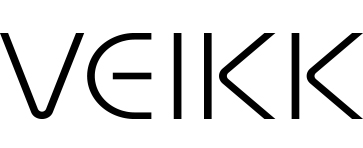
 English
English
 English (UK)
English (UK)
 Deutschland
Deutschland
 España
España
 France
France
 Europe
Europe
 India(EN)
India(EN)
 ไทย
ไทย
 Indonisia
Indonisia
 Vietnam
Vietnam
 Philippines
Philippines
 Southeast Asia
Southeast Asia
 日本(JP)
日本(JP)
 대한민국
대한민국



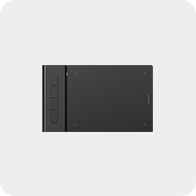
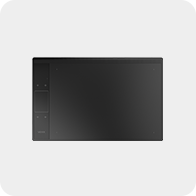
.png?v=1666149643)
